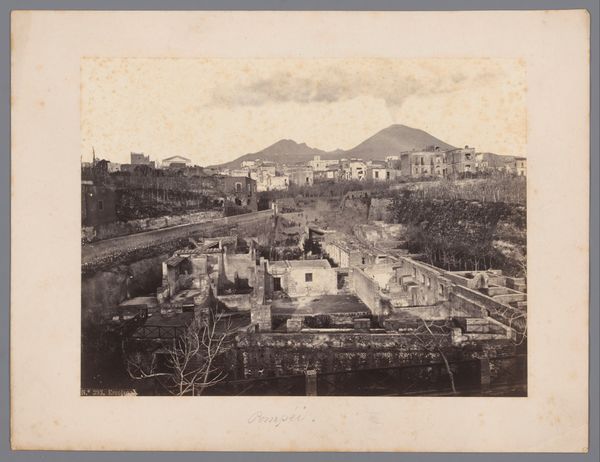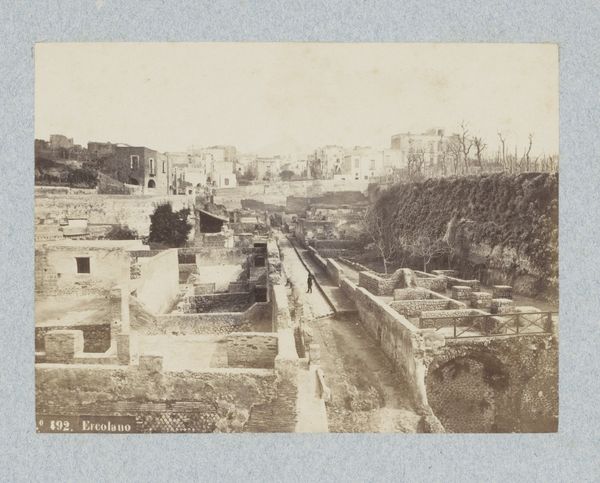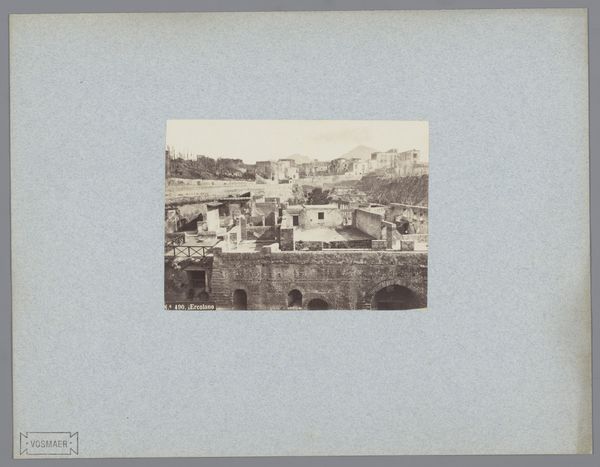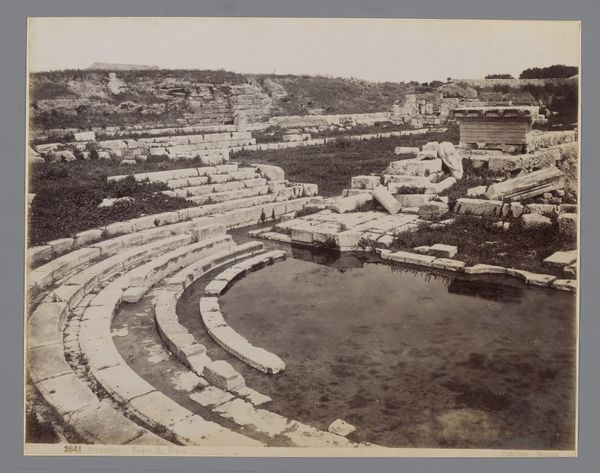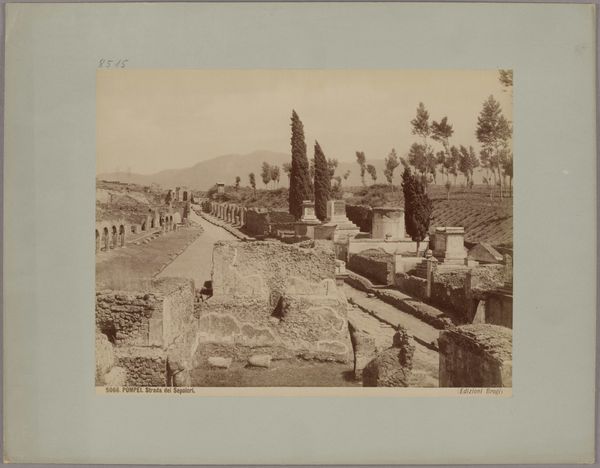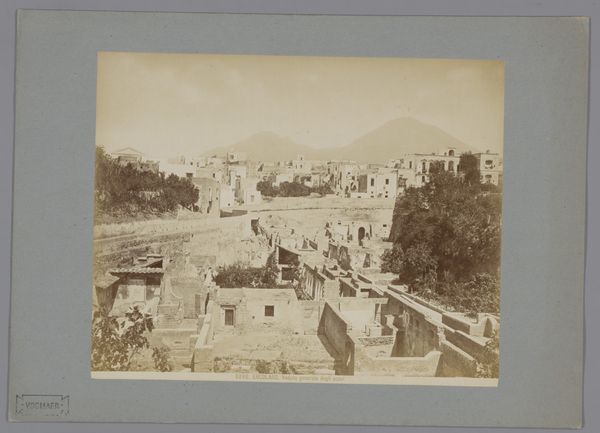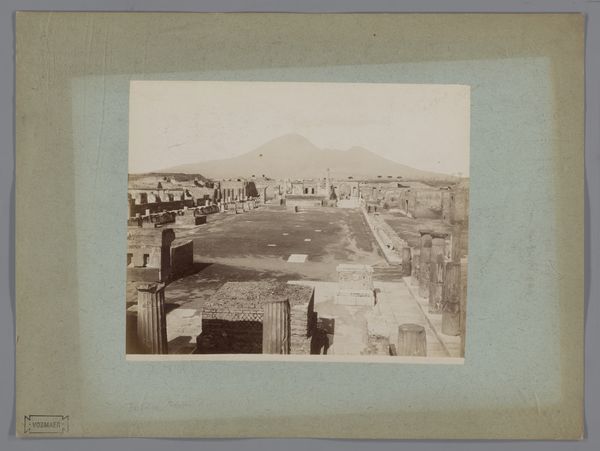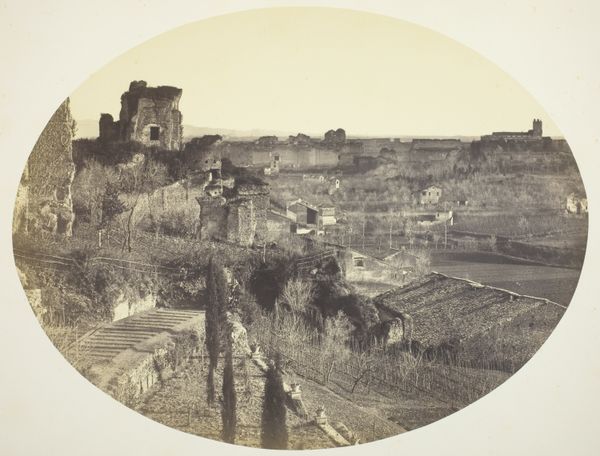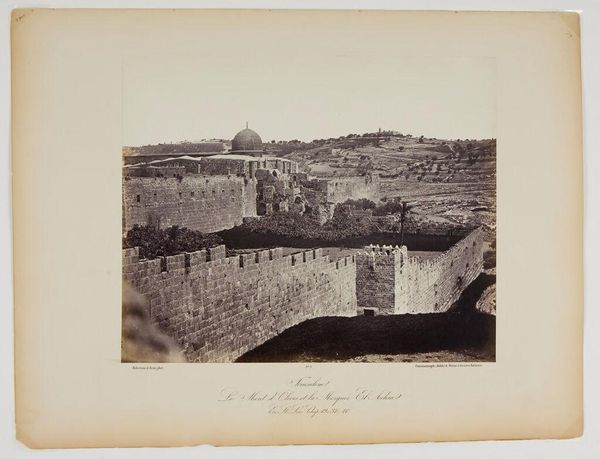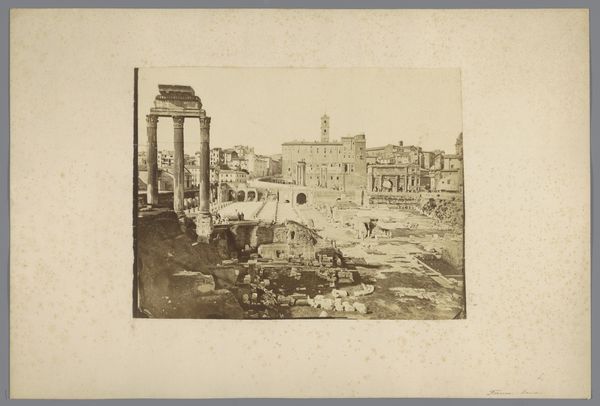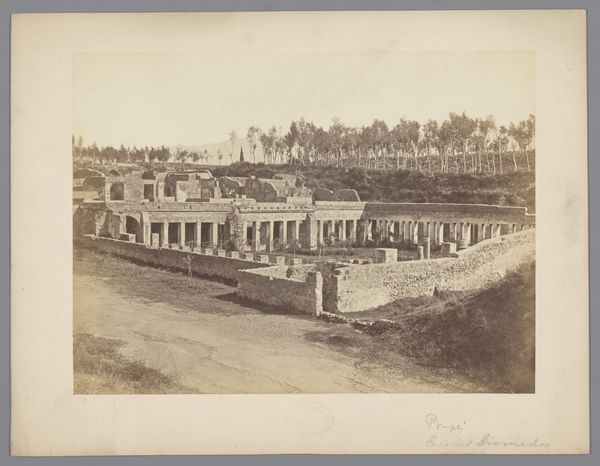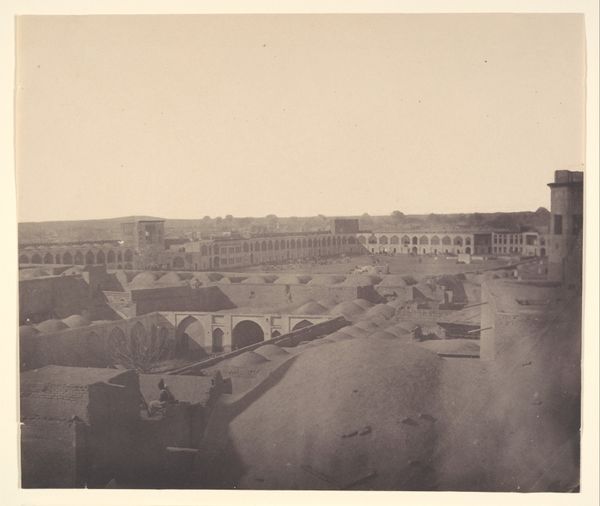
photography, gelatin-silver-print
#
landscape
#
photography
#
ancient-mediterranean
#
gelatin-silver-print
#
cityscape
Copyright: Public domain
Curator: Roberto Rive’s gelatin silver print, "Herculaneum, Pompeii", circa 1880, captures the stillness and sorrow of a lost city. It's a fascinating cityscape from the late 19th century currently held in the Rijksmuseum collection. Editor: What strikes me immediately is the photograph's tonal range. The sepia wash lends it a distinctly nostalgic affect and, of course, an air of timelessness, given its subject matter. I'm also drawn to the lines--vertical in some places and horizontal in others. It creates an amazing composition and directs your eye into the picture plane. Curator: Indeed. Rive, working in the 19th century, was clearly responding to the expanding Grand Tour phenomenon, the surge of upper-class travelers eager to witness ancient ruins. Photography was essential in popularizing archeological sites, allowing viewers around the globe a tangible link to these lost societies. Think how significant it would be to see such detail of Pompeii, for the first time, especially if one were unable to travel. Editor: I’m struck by the emptiness. The frame is carefully considered and contains some pedestrians—visitors, I assume—yet the focus remains relentlessly on architectural form. The framing of walls against the dark slopes really makes it a unique image and composition. Curator: Right, it becomes a somber reflection on temporality, on history itself. This photograph exists, after all, because of destruction, of a singular moment of devastation that nonetheless preserved an entire urban culture. Photography offered both evidentiary detail, and a memento mori of sorts. Editor: Exactly, and there is something almost ghostly in this still image of Pompeii frozen in time; it invites meditation on both its rise and cataclysmic fall. Rive captured not just a city but also its absence, an emptiness filled with resonant historical weight. Curator: Well put. Ultimately, Rive's work presents an enduring vision. While providing a tangible link to antiquity for its viewers, it invites an exploration of what survives and how we commemorate, and ultimately mourn, civilizations of the past. Editor: A photograph then that shows us something of our place, here and now, in an unfolding, never ending cycle of civilizations rising, and civilizations declining. Thank you.
Comments
No comments
Be the first to comment and join the conversation on the ultimate creative platform.
